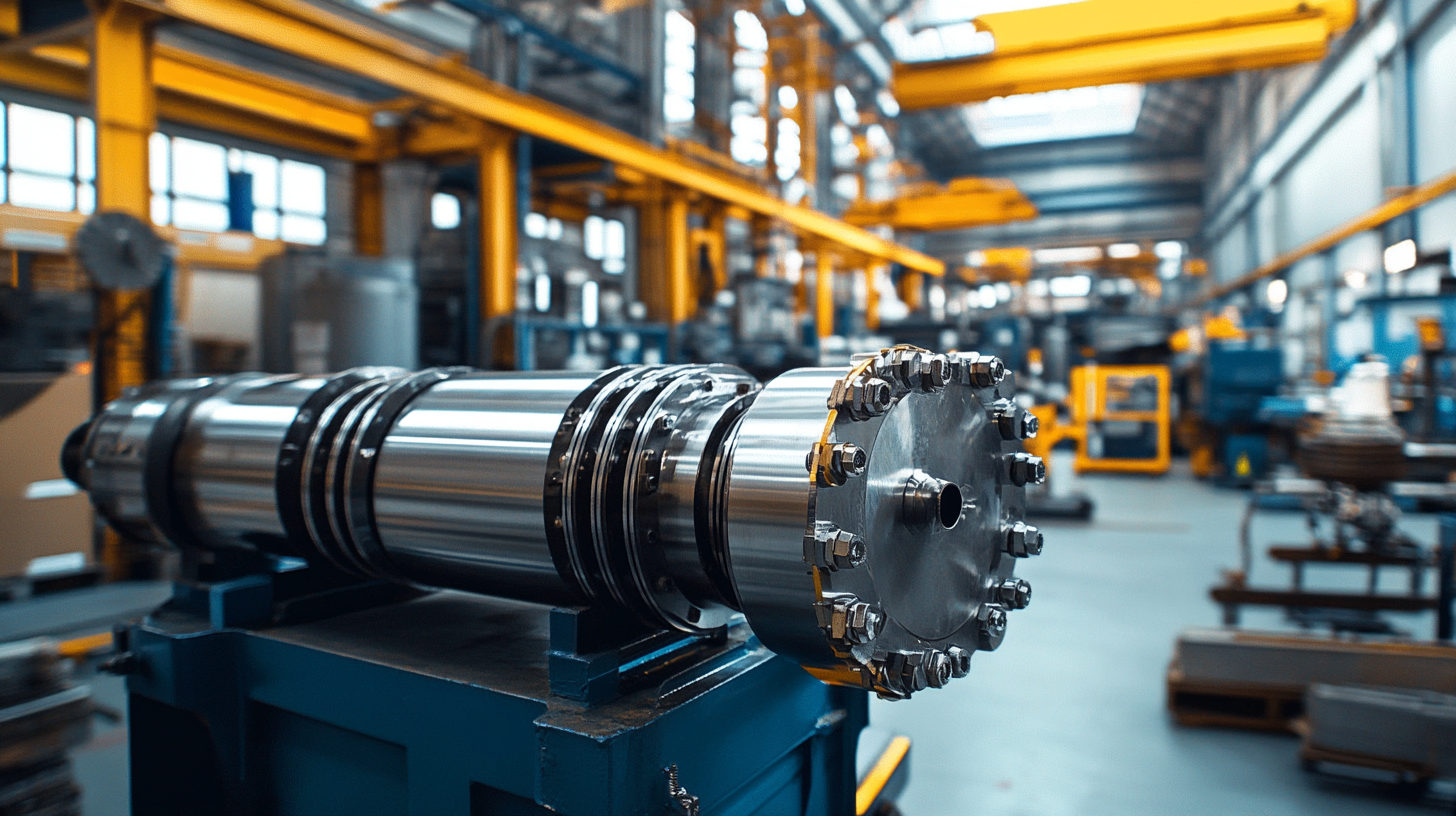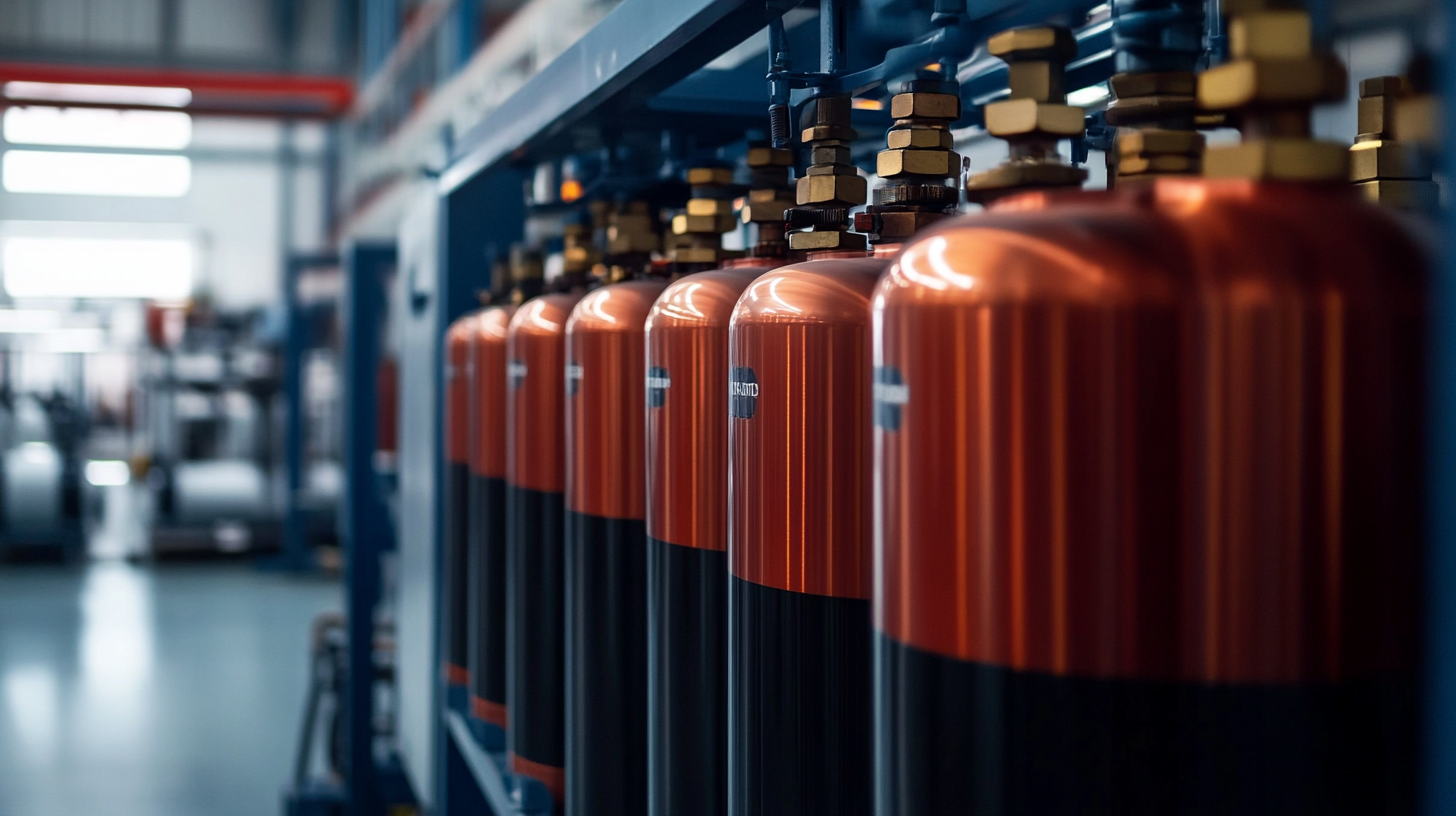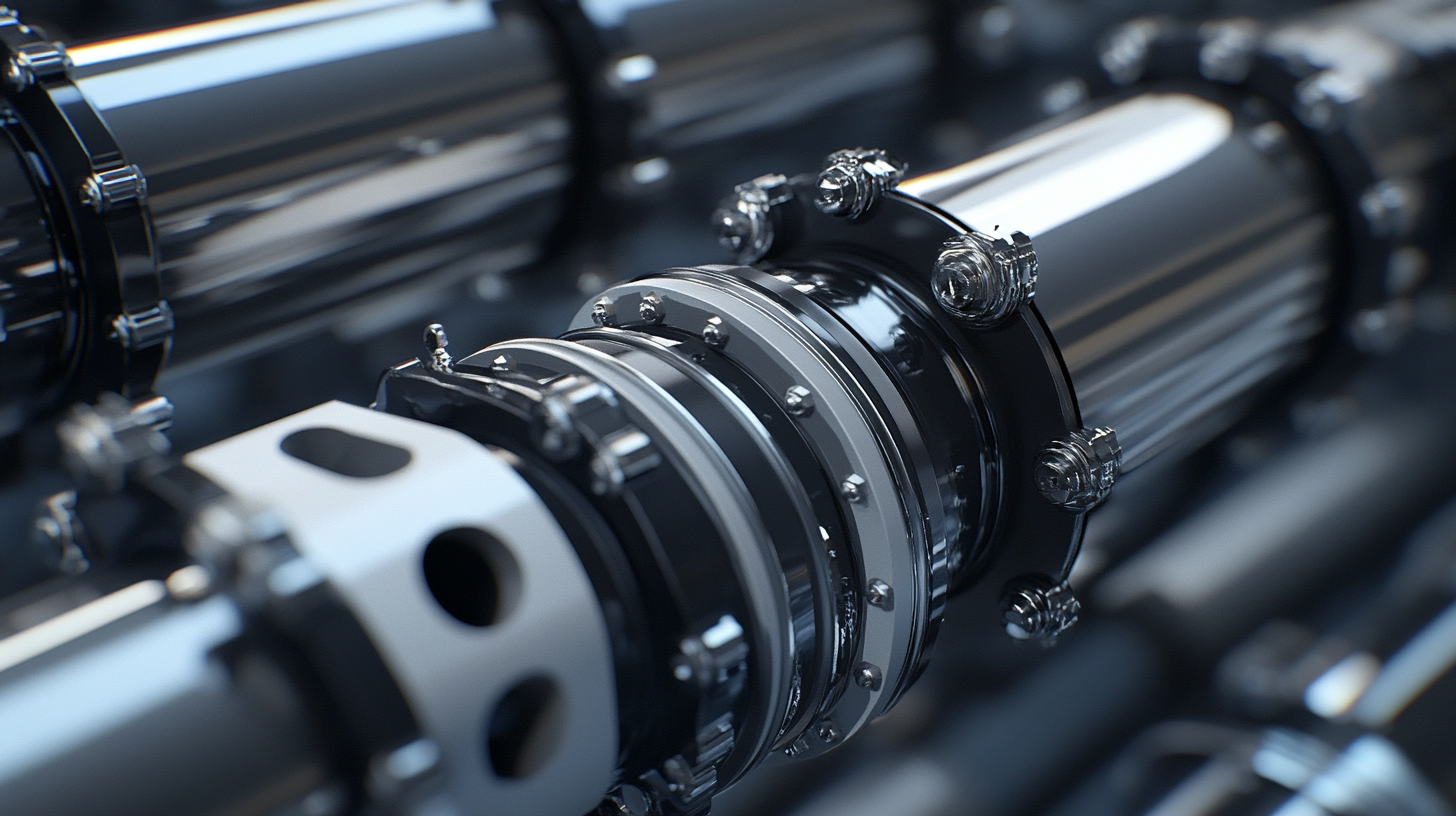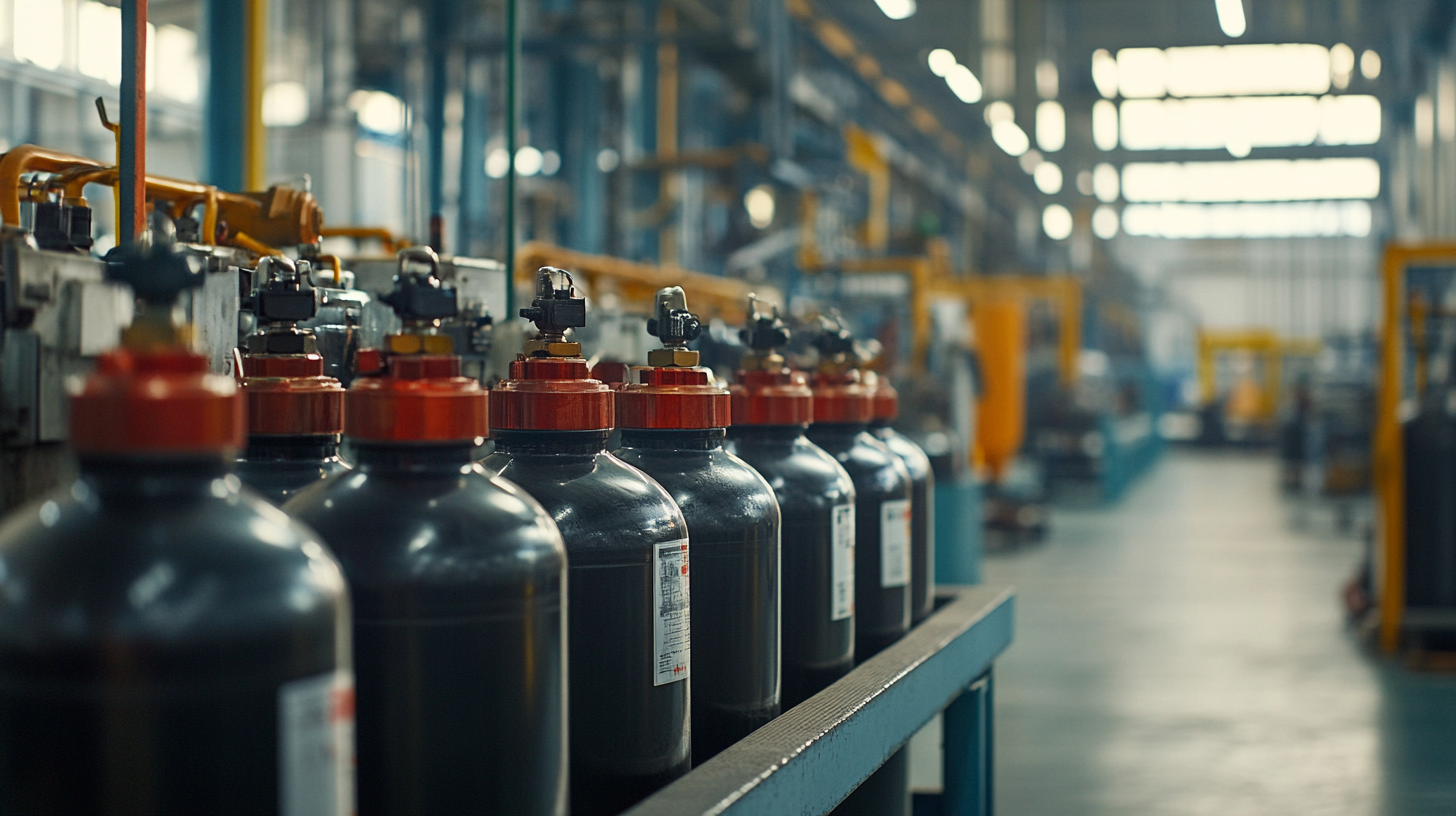International Fluid Power Inc.
International Fluid Power - Innovative Partners For Global Sourcing Of Fluid Power Products. Your Complete Hydraulic Source in SE Minnesota.
INTERNATIONAL FLUID POWER, INC.
Innovative Strategies for Sourcing Hyd Cylinders Worldwide
In the ever-evolving landscape of manufacturing and industrial operations, the demand for high-quality and reliable hydraulic cylinders, or "hyd cylinders," has surged globally. As businesses seek to optimize their processes and enhance efficiency, sourcing these essential components becomes a crucial concern. However, navigating the complexities of international supply chains, varying quality standards, and competitive pricing can pose significant challenges. This blog will explore innovative strategies that companies can employ to effectively source hyd cylinders from around the world, ensuring they not only meet operational requirements but also foster lasting supplier relationships.
The global sourcing of hyd cylinders is not merely about finding the lowest price; it involves a strategic approach that encompasses quality assurance, regulatory compliance, and risk management. By leveraging technology, establishing strong partnerships, and adopting a proactive stance, organizations can uncover new opportunities in the international marketplace. This blog aims to provide insights and practical tips for businesses looking to innovate their sourcing strategies, paving the way for enhanced productivity and cost-effectiveness in their operations. Join us as we delve into the best practices for sourcing hyd cylinders globally and setting the foundation for future success.

Emerging Markets: Identifying Opportunities for Hydraulic Cylinder Sourcing
Emerging markets are increasingly becoming focal points for sourcing hydraulic cylinders, presenting a host of opportunities for manufacturers and suppliers alike. As the global hydraulic cylinder market is projected to grow from $14.3 billion in 2021 to $18.3 billion by 2027, identifying and tapping into these burgeoning markets can provide significant advantages. The growth is driven not only by rising infrastructure development but also by a shift towards more efficient hydraulic systems across various industries. Countries in Southeast Asia, Eastern Europe, and some parts of Latin America have shown remarkable growth potential. As industries mature in these regions, the demand for hydraulic cylinders is expected to rise, fueled by construction, agriculture, and manufacturing sectors. Companies looking to diversify their sourcing strategies should focus on developing relationships in these emerging markets, which can provide both cost-effective production options and accessibility to new customer bases. Furthermore, advancements in technology and manufacturing processes in these regions can enhance the quality and efficiency of hydraulic cylinder production. Collaborating with local manufacturers and leveraging their expertise can lead to the development of innovative products that cater to specific market needs. By aligning sourcing strategies with emerging markets, businesses can not only secure a competitive edge but also contribute to the overall growth of the hydraulic components industry in a rapidly changing global landscape.

Leveraging Technology: Digital Tools for Efficient Procurement of Hydraulic Cylinders
In today's competitive landscape, the procurement of hydraulic cylinders requires innovative approaches that harness the power of technology. With the rapid expansion of the industrial hydraulic equipment market, leveraging digital tools has become essential for efficient sourcing. Companies are now turning to advanced procurement platforms and data analytics to streamline their supply chain processes, reducing lead times significantly. By utilizing these technologies, organizations can gain valuable insights into market trends, pricing, and supplier performance, ultimately enhancing decision-making capabilities.
One of the most impactful technologies in this space is the integration of artificial intelligence (AI) and machine learning into procurement systems. These tools can predict demand fluctuations, recommend optimal suppliers based on historical data, and automate various procurement tasks, freeing up valuable human resources. As a result, businesses can focus on strategic relationships instead of getting bogged down by administrative tasks. The enhanced visibility and control over sourcing operations enable companies to respond swiftly to market shifts, which is particularly vital in the fluctuating realm of hydraulic equipment.
Furthermore, cloud-based solutions are making it easier than ever to collaborate with suppliers worldwide. These platforms facilitate real-time communication, allowing for quick adjustments in procurement strategies as needed. By employing digital tools for sourcing hydraulic cylinders, organizations can not only improve their operational efficiency but also build a resilient supply chain capable of adapting to global market dynamics. Embracing these innovations is crucial for staying ahead in the ever-evolving industrial sector.

Building Strong Partnerships: Collaborating with Global Suppliers for Better Access
In today’s global marketplace, sourcing hydraulic cylinders requires more than just transactional relationships; it demands the forging of strong partnerships with suppliers around the world. Collaboration is key to not only ensuring quality but also to fostering innovation and access to new technologies. By investing time and resources into building these partnerships, companies can benefit from the unique strengths and expertise that diverse suppliers bring to the table.
One effective strategy for creating robust partnerships is through open communication and shared goals. Establishing regular dialogues can help suppliers understand your specific needs and challenges, allowing them to tailor their offerings more effectively. Furthermore, shared visions often lead to joint investments in research and development, paving the way for innovative solutions that can elevate your product offerings. By working closely together, businesses can also navigate regulatory complexities and regional market dynamics more efficiently.
Additionally, leveraging technology can play a significant role in enhancing these partnerships. Utilizing platforms for real-time communication, data sharing, and collaborative project management can help maintain transparency and foster trust. With these tools, both parties can act swiftly in addressing issues and capitalizing on new opportunities, ensuring that the supply chain remains agile and responsive to market demands. Ultimately, strong partnerships with global suppliers can provide businesses with a competitive edge in sourcing hydraulic cylinders, driving both growth and success.

Sustainability in Sourcing: Eco-Friendly Practices for Hydraulic Cylinder Procurement
In recent years, the need for sustainability in sourcing materials and components has increasingly taken center stage, especially in industries reliant on hydraulic systems. The procurement of hydraulic cylinders is no exception, as businesses strive to adopt eco-friendly practices that minimize environmental impact. By focusing on sustainable sourcing strategies, companies can significantly contribute to the conservation of natural resources while also enhancing their brand reputation.
Innovative strategies for sourcing hydraulic cylinders can involve selecting suppliers who employ sustainable manufacturing processes, such as using recycled materials and reducing waste during production. Additionally, engaging in partnerships with manufacturers that prioritize energy efficiency and lower carbon footprints can lead to a more sustainable procurement process. This holistic approach not only benefits the environment but can also yield cost savings through improved efficiency and reduced material costs.
Moreover, drawing parallels with other industries, such as fishery management, can offer insights into establishing better practices in hydraulic cylinder procurement. Just as overfishing prompts a re-evaluation of sourcing methods in the seafood industry, the hydraulic sector can similarly benefit from adaptive strategies that ensure resource availability while maintaining ecological balance. As companies in the lift and access industry move towards electrification, sustainable sourcing will be critical in shaping a more responsible and efficient future, paving the way for a greener operational model.
Quality Assurance: Ensuring Standards in Global Sourcing of Hydraulic Cylinders
In the global sourcing of hydraulic cylinders, quality assurance is paramount to ensure products meet international standards and regulatory requirements. As industries increasingly demand sustainable materials, the need for robust quality assurance mechanisms becomes even more critical. By implementing rigorous testing and certification procedures, companies can uphold product integrity and safety, which in turn fosters consumer trust and loyalty.
Moreover, as the sourcing landscape becomes more globalized, maintaining consistent quality across diverse suppliers poses significant challenges. Collaborating with suppliers who adhere to recognized international quality standards is essential. Establishing comprehensive guidelines and performance metrics can facilitate this process, enabling companies to identify reliable partners who prioritize quality at every production stage.
Additionally, leveraging technology, such as data analytics and quality management systems, can enhance the monitoring of hydraulic cylinder manufacturing. These tools assist in tracking compliance with quality standards, allowing for real-time adjustments and improvements. A commitment to quality assurance not only safeguards the reputation of sourcing companies but also promotes sustainable practices within the industry, aligning with the broader goal of ensuring responsible sourcing of critical materials.
You Can Find International Fluid Power Here:
Search For:
Footer #4 Widget
This is an example of a widget area that you can place text to describe a product or service. You can also use other WordPress widgets such as recent posts, recent comments, a tag cloud or more.
© 2025 International Fluid Power, Inc. All Right Reserved.
